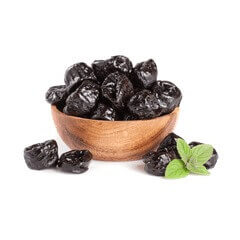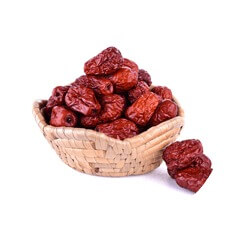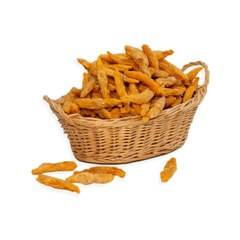Having diabetes requires you to be careful about your diet. You need to watch what you eat to ensure stable blood sugar levels. Rice is a starch and the world’s second-largest source of food energy. Different types of rice have a GL that depends on the type of starch they naturally contain. They have different glycemic indices depending on their variety and cooking methods. Fibre-rich foods can control your appetite, inhibit the amount of fat your body absorbs, and make you feel fuller at a faster rate. Many studies have found that eating fibre-rich rice leads to fat being defecated faster rather than being absorbed.
Which Choice for Diabetes?
Most white foods have the bad reputation of having a high glycemic index and being harmful to health. And for good reason, the majority of these foods have been processed. The same goes for rice! Rice is a common source of carbohydrates. Carbohydrates are an essential part of your daily diet, as they provide you with the nutrients needed for your body to function properly and provide you with enough fuel for energy.
The glycemic index of foods can measure the quality of carbohydrates in rice and other foods. If you are diabetic or have opted for low-GI food, you must consume it, and that’s good! However, it is important to know which one. For example, whole grains have much lower glycemic indices than white ones.
Did you know that Basmati rice is a nutritious option with a low glycemic index? In fact, it has one of the lowest glycemic indexes among rice varieties, second only to wild rice (GI = 35). The glycemic index of Basmati rice ranges from 45 (for whole Basmati rice) to 50 (for long Basmati rice). The glycemic index measures the effect of food on blood sugar levels in the two hours after consumption. Foods with moderate GI cause small increases in blood sugar levels, resulting in lower insulin production and a gentle return to normal blood sugar levels. This makes Basmati rice an ideal choice for people with Type 2 diabetes.
Furthermore, Basmati rice has a moderate glycemic index and requires longer chewing, which makes it more satisfying and helps reduce hunger. It is a great option for people to watch their weight. Basmati rice also contains vitamins and minerals, fibre, carbohydrates, protein, and less fat than most other types of rice, making it a healthier choice overall.
Basmati rice is also known for its fragrant aroma and nutty flavour, making it a great accompaniment to dishes with sauce. Additionally, Basmati rice is unique in that each grain remains separate when cooked, thanks to its high content of amylose (20-25%) and amylopectin. This means that Basmati rice never becomes sticky when cooked, making it a popular choice among rice lovers.
Let’s look at the differences between the most common.
The Different Rice
White Rice
It is now known that consuming white rice increases the risk of type 2 diabetes, thanks to studies carried out in recent years. Indeed, according to the conclusions of some of these studies, consumers of this variety have, on average, 25% more risk of seeing this type of diabetes occur.
Hulled and stripped of all of its bran husk, white rice loses many of its nutrients during the refining process, which makes it relatively poor nutritionally. Thus, approximately 67% of vitamin B3 is removed, 80% of vitamin B1, 90% of vitamin B6, half of manganese and phosphorus, 60% of iron, 80% of dietary fibre and almost all of the essential fatty acids.
Camargue Rice
Long white Camargue rice has a glycemic index of 70. Long fragrant Camargue rice has a glycemic index of 60. Only brown rice, such as red, brown and black rice, has a glycemic index of 40. The glycemic index can also vary depending on how it is cooked.
Brown Rice
The latter is more than just fibre. Indeed, it is rich in magnesium, selenium, an antioxidant that stimulates the immune system, and manganese: an important mineral for the maintenance of the body’s natural defences.
Brown rice doesn’t have as low a glycemic load as some grains, like barley or oats, but it’s a much better choice for your blood sugar than most white rice. Black and red will have glycemic indices between 50 and 55. It is, in fact, less processed than white because the outer shell of the beans is removed, but the underlying bran and germ layers remain on the bean. The bran layers are what make brown rice more nutritious compared to white. Bran contains vitamins, minerals and oils and also contains more fibre.
As a whole grain, brown rice helps reduce your risk of diabetes and heart disease. Indeed, remember that the goal is to try to eat three servings a day of whole grains, which protect against metabolic syndrome, diabetes, heart disease, stroke and cancer.
Basmati Rice
Basmati is a long-grain rice originating from India or Pakistan. The name “Basmati” comes from Hindi, meaning the “queen of perfume” (Queen of Fragrance): it is one of the most fragrant in the world. It is nutritionally interesting because it is one of the varieties with the lowest glycemic index after wild rice (GI = 35).
Indeed, the glycemic index of basmati oscillates between 45 for the complete basmati and 50 for the long one. It contains a large amount of amylose, a type of carbohydrate that is more difficult for the body to digest. Regarding fats, basmati contains unsaturated fats, which are significantly lower in bad cholesterol. Thus, it is recommended as a heart-healthy super grain.
Wild Rice
The latter is the seed of an aquatic grass plant. Very nutritious, it is also conducive to good health. Indeed, it contains a large amount of protein, vitamin A, omega three and folic acid. It represents only a small amount of carbohydrates and lipids. This avoids the problems of rising blood sugar. Wild rice contains phytonutrients that are essentially beneficial for health, especially for bones and teeth. It provides both energies, strengthens the immune defence system, and promotes tissue regeneration.
Conclusion
To prevent the rise in blood sugar in diabetes or maintain a healthy weight, choose the right rice: Brown, wild, Basmati or Camargue; take your pick.
Adnoor is the ideal platform to get the best quality dried fruits, nuts, seeds, and basmati rice in Canada. We have been the wholesale supplier of rice and dried fruits in Canada for the last 25 years. We aim to provide our customers with the best quality products so they keep trusting us. Visit our website for more details.








Golden Grains, the Best Basmati Rice in Canada - Adnoor
July 21, 2023[…] to new heights, creating an unforgettable dining experience. The distinctive aroma and texture of best Basmati rice have not only made it a beloved culinary staple in its region of origin but have also garnered […]